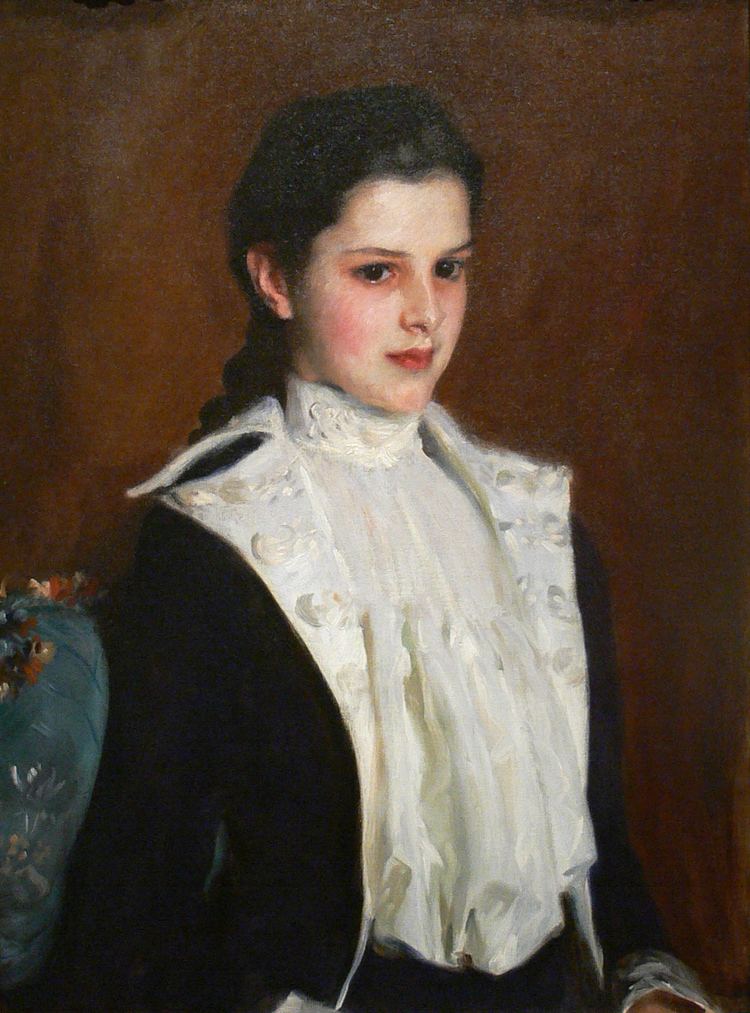Name Alice Morris Parents Elliott Fitch Shepard | ||
 | ||
Spouse David Hennen Morris (m. 1895) Grandparents Fitch Shepard, Delia Maria Dennis People also search for David Hennen Morris, John Albert Morris, William Edward Collinson | ||
Episode 22: The Focal Skills Approach and Alice Vanderbilt Morris
Alice Vanderbilt Shepard Morris (December 7, 1874 – August 15, 1950) was a member of the Vanderbilt family. She co-founded the International Auxiliary Language Association (IALA).
Contents

Biography

Alice Vanderbilt Shepard was the daughter of Elliot Fitch Shepard (1833–1893); and Margaret Louisa Vanderbilt (1845–1924), the eldest daughter of William Henry Vanderbilt and Maria Louisa Kissam. In 1895 Alice married Dave Hennen Morris (1872–1944), who later became the U.S. Ambassador to Belgium.
Alice was known to her family as "Angela" because of the sweetness of her disposition and the beauty of her face, well-demonstrated by her attached portrait. She was no true angel, however, and climbed a tree against her father's specific interdiction and fell out fracturing her thoracic spine. Her father, a hard man, refused to call the doctor to punish her disobedience. She grew up deformed in Woodlea, a mansion on the Hudson now occupied as the clubhouse of the Sleepy Hollow Country Club.
She was courted for sometime by Dave who saw her face around the funnel of the steamer to France and knew at once that he must marry her. When he pursued her more closely, he saw that she had a deforming scoliosis which did not change his ardor one bit. When he presented himself to ask for her hand in marriage, her father (the hard man), told him he would never amount to anything good and asked him to leave and have no further contact with the family. When he was allowed to say good-bye to her in the hall, he asked her to elope with him. She climbed out the window that night for an extraordinary life. Her sister later packed up her clothes in a trunk and sent them on by Railway Express. Mr. Shepard was infuriated at the insubordination of yet another daughter and refused to speak to her for a year, as the family story goes. The couple had six children: David, Jr., Louise, Lawrence, Noel, Emily and Alice.
She attended the Radcliffe College of Harvard University. She was an honorary member of the Phi Beta Kappa society. She also received an honorary doctorate in Literary Science from Syracuse University "as special recognition of the field of study that you have made your own, the field of the international auxiliary language." She was Vice President of the World Service Council of the YWCA United States.
From her youth, Morris was troubled by ill health and was forced to spend much of her time on a sofa. Despite her illness, she initiated what was probably the most extensive linguistic research undertaken to date. During her stay at a clinic, Morris found a brochure on the artificial language Esperanto. She became interested in the idea of a neutral auxiliary language that could facilitate communication among diverse groups of people. Frederick Gardner Cottrell, later a well-known American chemist, persuaded Morris to tackle the problem of an auxiliary language, but objectively and scientifically.
In 1924, Morris and her husband founded the International Auxiliary Language Association (IALA). Morris had studied Esperanto, so the neutrality of IALA was often a dilemma for her. Nevertheless, she succeeded in remaining neutral. In 1945, she co-authored with Mary C. Bray the General Report of IALA. Morris was actively involved in the association – and remained its honorary Secretary – for the rest of her life.
Morris died in 1950 in New York. She was 75. About six months later, the Interlingua-English Dictionary was published, presenting to the world her life's work, Interlingua.
In 1999, Julia S. Falk of Michigan State University published the book Women, Language and Linguistics – Three American Stories from the First Half of the Twentieth Century (320 pp.). The women portrayed were Gladys Amanda Reichard, E. Adelaide Hahn, and Alice Vanderbilt Morris.
